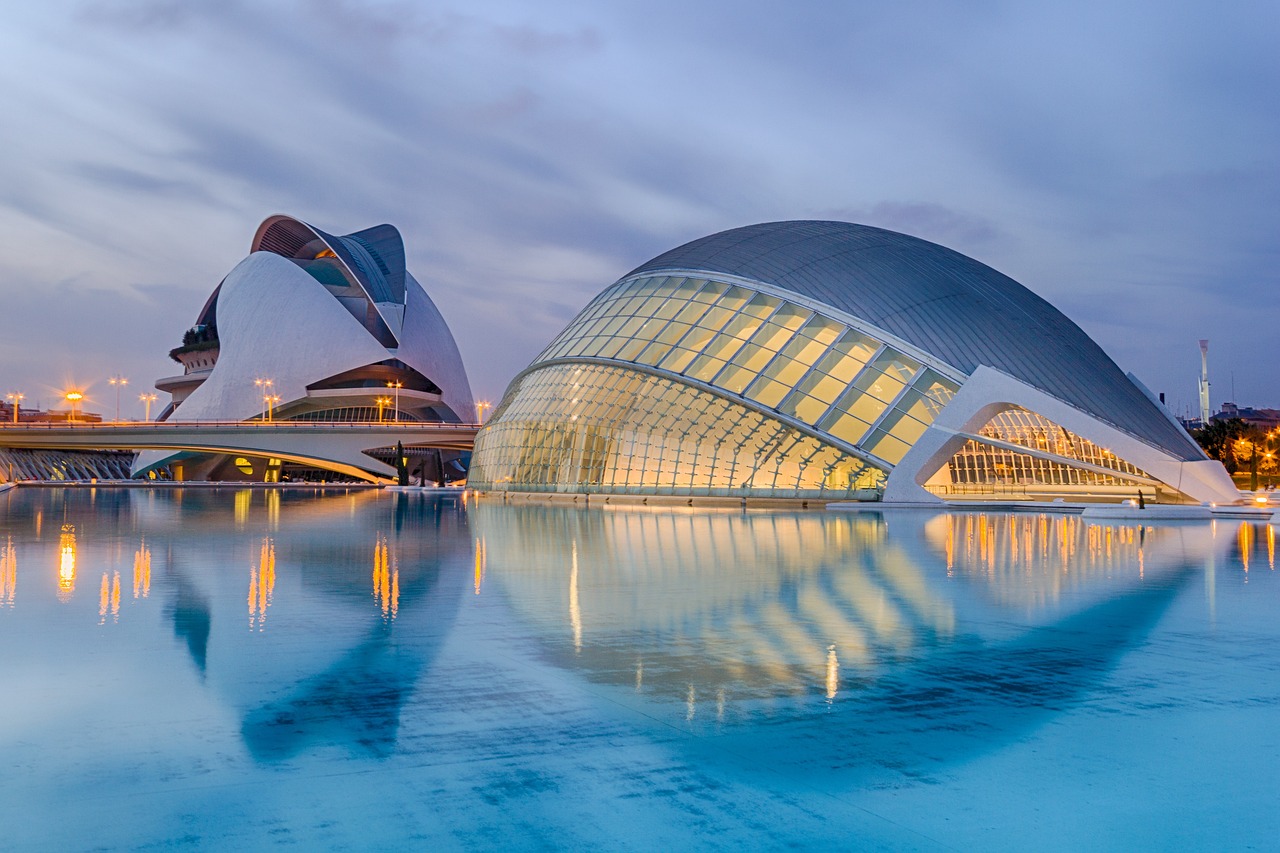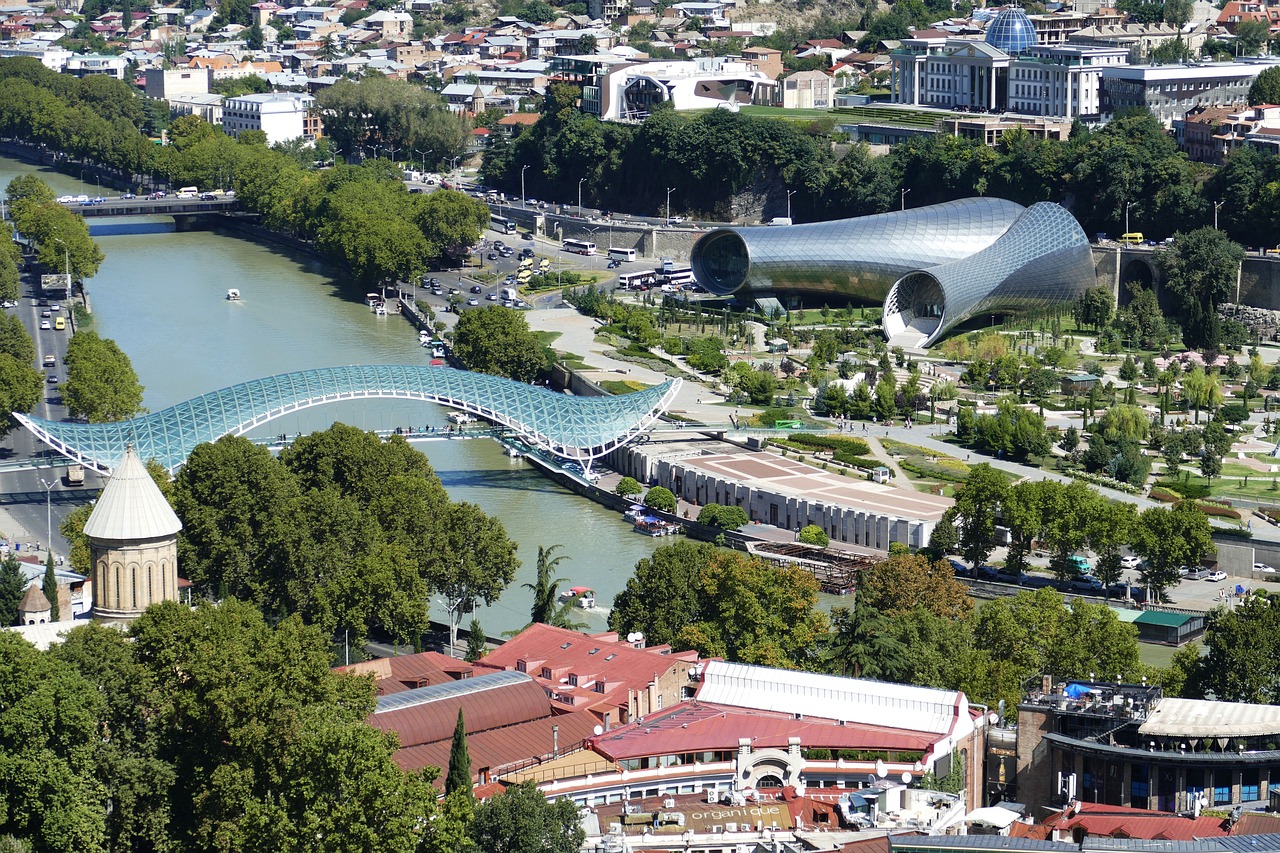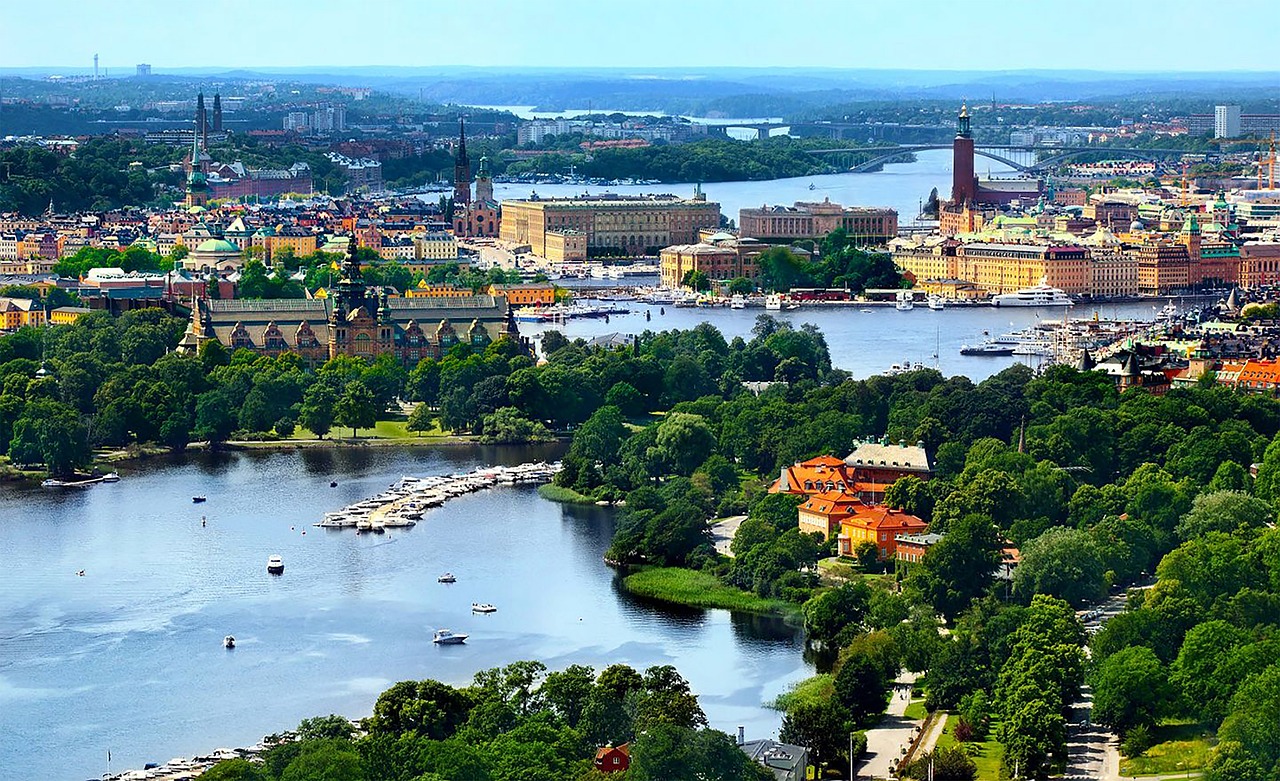Valencia is a city located on the eastern coast of Spain, on the Mediterranean Sea. It is the capital of the province of Valencia and the third-largest city in Spain, after Madrid and Barcelona. The city is known for its beautiful beaches, historic architecture, delicious cuisine, and vibrant cultural scene. Valencia is also famous for its Fallas festival, which takes place every year in March and involves elaborate parades, fireworks, and the burning of giant papier-mâché sculptures.
Short History
Valencia has a rich and complex history that dates back to pre-Roman times. The city was founded as a Roman colony in 138 BC and was later ruled by the Visigoths, Moors, and Christians. During the Middle Ages, Valencia was a major cultural and economic center, known for its silk production and thriving port. In the 15th century, the city became part of the Kingdom of Aragon and played a key role in the Spanish conquest of the Americas.
In the 19th and early 20th centuries, Valencia underwent a period of rapid modernization, with the construction of new infrastructure and the growth of the city’s industrial sector. Today, Valencia is a dynamic and cosmopolitan city that continues to play an important role in the cultural and economic life of Spain.
Architecture
The architecture of Valencia is a reflection of its rich history and diverse cultural influences. Some of the city’s most notable architectural landmarks include:
- The City of Arts and Sciences: This futuristic complex, designed by architect Santiago Calatrava, is one of Valencia’s most famous landmarks. It includes a science museum, an opera house, an IMAX theater, and several other cultural attractions.
- Valencia Cathedral: This Gothic cathedral dates back to the 13th century and is famous for its Micalet bell tower, which offers stunning views of the city.
- Lonja de la Seda: Also known as the Silk Exchange, this Gothic building was constructed in the 15th century and is a UNESCO World Heritage Site.
- Torres de Serranos: These medieval gates are part of the ancient city walls and offer a glimpse into Valencia’s history as a fortified city.
- Mercado Central: This lively market, housed in a beautiful Modernist building, offers a wide range of fresh produce and local specialties.
- Estación del Norte: This stunning Art Nouveau train station was designed by architect Demetrio Ribes and features intricate ceramic details and colorful mosaics.
- Palau de la Musica: This concert hall, built in the early 20th century, is renowned for its beautiful Art Nouveau architecture and excellent acoustics.
Overall, the architecture of Valencia reflects the city’s colorful cultural heritage and offers visitors a fascinating journey through the history of Spain.
Museums and Galleries
Valencia is home to a wide range of museums and galleries, offering visitors a fascinating insight into the city’s history, culture, and art. Some of the most interesting museums and galleries in Valencia include:
- City of Arts and Sciences: This complex includes several museums, including the Principe Felipe Science Museum and the Oceanografic aquarium.
- National Museum of Ceramics and Decorative Arts: Housed in a beautiful 18th-century palace, this museum features an impressive collection of ceramics and decorative arts from Spain and around the world.
- Museum of Fine Arts of Valencia: This museum houses an extensive collection of paintings and sculptures, including works by some of Spain’s most famous artists.
- IVAM – Valencian Institute of Modern Art: This contemporary art museum showcases works by some of the most innovative and influential artists of the 20th and 21st centuries.
- Museum of the Fallas: This museum offers a fascinating look at Valencia’s famous Fallas festival, including the creation and burning of the festival’s iconic papier-mâché sculptures.
- Almudin Museum: This museum, housed in a historic Gothic building, explores the history of Valencia’s medieval grain trade.
- L’iber Museum of Toy Soldiers: This unique museum showcases a collection of over 95,000 toy soldiers and miniature figurines, dating back to the 18th century.
Whether you’re interested in science, history, art, or culture, Valencia has something to offer appealing to all interests and tastes.
Landmarks and Monuments
Valencia is a city with a wealth of landmarks and monuments that reflect its long and complex history. Some of the most interesting landmarks and monuments in Valencia include:
- Valencia Cathedral: This stunning Gothic cathedral is home to the Holy Grail and offers visitors a glimpse into the city’s rich religious history.
- Torres de Serranos: These medieval gates are part of the ancient city walls and offer a glimpse into Valencia’s history as a fortified city.
- Lonja de la Seda: Also known as the Silk Exchange, this Gothic building was constructed in the 15th century and is a UNESCO World Heritage Site.
- Central Market: This lively market, housed in a beautiful Modernist building, offers a wide range of fresh produce and local specialties.
- Mercado Colon: This early 20th-century market is a stunning example of Art Nouveau architecture and is now home to a range of shops and restaurants.
- Estación del Norte: This stunning Art Nouveau train station was designed by architect Demetrio Ribes and features intricate ceramic details and colorful mosaics.
- Plaza del Ayuntamiento: This bustling square is home to some of Valencia’s most iconic buildings, including the City Hall and the Post Office building.
- Silk Exchange: A 15th-century Gothic building that served as the center of Valencia’s thriving silk trade.
Overall, Valencia’s landmarks and monuments offer visitors a fascinating glimpse into the city’s history and cultural heritage. From Gothic cathedrals to Art Nouveau train stations, there is something for everyone to enjoy in this vibrant and beautiful city.
Parks and Green Spaces
Valencia is a city with a wealth of green spaces and parks, offering visitors a chance to relax and enjoy the natural beauty of the city. Some of the most interesting parks and green spaces in Valencia include:
- Jardines del Turia: This stunning park is built on the former bed of the Turia River and offers visitors a chance to enjoy nature and explore the city.
- Parque de Cabecera: This large park is located near the Bioparc zoo and features a wide range of attractions, including a lake, playgrounds, and picnic areas.
- Jardín Botánico de Valencia: This botanical garden features a stunning collection of plants and flowers from around the world, including a tropical greenhouse and a cactus garden.
- Parque Natural de la Albufera: This natural park is located just outside of Valencia and offers visitors a chance to explore the region’s wetlands and wildlife.
- Parque de Gulliver: This unique park features a giant sculpture of the famous literary character Gulliver, which children can climb and explore.
- Jardines de Monforte: This beautiful garden features ornate fountains, sculptures, and a wide range of plants and flowers.
- Parque de Benicalap: This large park is located in the north of the city and features a variety of outdoor activities, including a BMX track and a skate park.
Overall, Valencia’s parks and green spaces offer visitors a chance to escape the hustle and bustle of the city and enjoy some time in nature. From botanical gardens to unique sculpture parks, there is something for everyone to enjoy in Valencia’s green spaces.
Shopping Districts
Valencia is a shopper’s paradise, with a wide range of shopping districts and markets to explore. Some of the most interesting shopping districts in Valencia include:
- Calle Colón: This bustling street is home to some of Valencia’s most popular shops and department stores, including El Corte Inglés and Zara.
- Central Market: This lively market offers a wide range of fresh produce, local specialties, and traditional handicrafts.
- Ruzafa: This trendy neighborhood is home to a range of independent shops and boutiques, as well as trendy bars and restaurants.
- Mercado de Colon: This beautiful Modernist market is now home to a range of shops, cafes, and restaurants.
- Avenida de Francia: This up-and-coming area is home to a range of trendy shops and boutiques, as well as some of Valencia’s best restaurants and bars.
Valencia offers visitors a wide range of shopping districts and markets to explore, from bustling streets to trendy neighborhoods. Whether you’re looking for high-end fashion or traditional handicrafts, there is something for everyone to enjoy in Valencia’s shopping districts.
Food and Drink
Valencia is known for its delicious cuisine, which features a mix of Mediterranean and Spanish flavors. Some of the most popular dishes and drinks to try in Valencia include:
- Paella: Valencia is the birthplace of this famous rice dish, which is typically made with chicken, rabbit, or seafood.
- Horchata: This sweet, creamy drink is made from tiger nuts and is a popular refreshment during the hot summer months.
- Arroz al horno: This hearty dish is made with baked rice, meat, and vegetables and is a popular choice for Sunday lunch.
- Fideuà: This dish is similar to paella, but is made with short noodles instead of rice.
- Churros con chocolate: These deep-fried pastries are served with thick, rich hot chocolate and are a popular breakfast or snack.
- Oranges: Valencia is known for its sweet, juicy oranges, which are used in a variety of dishes and drinks.
- All i pebre: This traditional Valencian stew is made with eel, potatoes, and paprika, and is a popular winter dish.
Valencia’s cuisine is a must-try for foodies, with a wide range of delicious dishes and drinks to sample. From the famous paella to sweet horchata, there is something for everyone to enjoy in Valencia’s culinary scene.
Transportation
Valencia is a city that is easy to navigate, with a variety of transportation options available to visitors. It is easily accessible by foot or public transportation, making it easy for tourists to get around and explore. Some of the best ways to move around Valencia include:
- Walking: Valencia is a relatively small city, and many of its top attractions are located within walking distance of each other. Walking is a great way to explore the city and take in its beautiful architecture and parks.
- Biking: Valencia has a well-developed bike-sharing system, which allows visitors to rent bikes for short periods of time and explore the city on two wheels. There are also many bike rental shops throughout the city.
- Public transportation: Valencia has an efficient public transportation system, which includes buses, trams, and a metro system. The transportation system is easy to use and affordable, and can take visitors to all parts of the city.
- Taxis: Taxis are widely available in Valencia and are a convenient option for getting around the city, especially at night or when traveling in a group.
- Rental car: For visitors who want to explore outside the city, renting a car is a good option. However, navigating Valencia’s narrow streets and parking can be challenging, so it’s important to plan ahead.
Whether walking, biking, or taking public transportation, there are many ways to explore this beautiful city.
City Safety
Valencia is generally a safe city for visitors, with a low crime rate compared to other major cities in Europe. However, as with any city, it’s important to take common-sense safety precautions to avoid any potential issues.
Some tips for staying safe in Valencia include:
- Be aware of your surroundings, especially in tourist areas and at night.
- Keep your valuables secure and out of sight, and be aware of pickpockets in crowded areas.
- Stick to well-lit and busy streets, especially at night.
- Use licensed taxis or ride-sharing services, and avoid unmarked or unofficial taxis.
- Follow traffic rules and be aware of potential hazards when driving or biking.
Overall, Valencia is a safe city, but it’s always important to take basic safety precautions to ensure a safe and enjoyable trip.
Expensive or Cheap
Valencia is generally an affordable city for visitors, with prices lower than many other major European cities. However, like any destination, the cost of travel can vary depending on your budget and travel style.
Some examples of prices in Valencia include:
- Accommodation: Budget hostels can start at around €15-20 per night, while mid-range hotels may cost €60-80 per night.
- Food and drinks: Eating out at restaurants can vary widely in price, with budget options available for around €10-15 per meal, while mid-range and high-end restaurants can cost €30-50 or more. Street food and local markets can be more affordable options. A cup of coffee or a small beer can cost around €1-2.
- Transportation: Public transportation in Valencia is affordable, with a single trip on the metro or bus costing €1.50. Taxis are also relatively affordable.
- Attractions: Many of Valencia’s top attractions, such as the City of Arts and Sciences, have admission fees, which can range from around €8-20 per person.
However, the cost of travel can vary depending on your budget and travel style, so it’s important to do research and budget accordingly.
Best Time to Travel
The peak tourist season in Valencia is during the summer months of July and August when the weather is hot and sunny, and the city is bustling with events and activities. However, this is also the busiest and most expensive time of year, with large crowds and higher prices.
The shoulder seasons of April-June and September-November offer milder weather, fewer crowds, and more affordable prices. This can be a good time to visit if you want to enjoy the city’s outdoor activities and festivals, such as Las Fallas in March.
Winter in Valencia is mild and can be a good option for travelers who don’t mind cooler temperatures and want to avoid the crowds. However, some attractions and businesses may have reduced hours during this time.
Overall, the best time to travel to Valencia depends on your personal preferences, travel style and the type of experience you’re looking for. Whether you prefer hot summer weather or milder shoulder season temperatures, there is something to enjoy in Valencia year-round.
Date Ideas
Valencia is a beautiful and romantic city that offers a variety of date ideas for couples. Here are some date ideas to consider in Valencia:
- Stroll through the Turia Gardens, a beautiful park that runs through the heart of the city, and have a picnic on the grass.
- Explore the Old Town and admire the beautiful architecture, such as the Cathedral and the Lonja de la Seda.
- Take a sunset walk along the beach and enjoy the beautiful views of the Mediterranean Sea.
- Enjoy a romantic dinner at one of the city’s top-rated restaurants, such as Casa Carmela or La Salita.
- Visit the City of Arts and Sciences and see a film at the IMAX theater or enjoy a performance at the Palau de les Arts.
- Take a romantic boat ride on the Albufera lagoon and watch the sunset over the water.
- Visit the Mercado Central and sample some of the city’s delicious local cuisine, such as paella or horchata.
- Attend a concert or show at the beautiful Teatro Principal, a historic theater in the heart of the city.
- Take a hot air balloon ride over the city and enjoy the stunning views from above.
- Go on a wine tasting tour and explore the city’s many wineries and vineyards.
From strolling through beautiful parks to sampling delicious local cuisine, there are many ways to create lasting memories in this charming Spanish city.
Fun and Interesting Facts
Valencia is a beautiful coastal city located in eastern Spain, known for its cuisine, architecture and history. Here are some fun and interesting facts about Valencia:
- Valencia is known as the birthplace of paella, a popular Spanish dish made with rice, vegetables, and meat or seafood.
- The city was founded by the Romans in 138 BC and has a rich history that can be seen in its stunning architecture and landmarks.
- Valencia is famous for its annual Las Fallas festival, where huge sculptures are built and then burned in the streets.
- The City of Arts and Sciences is a modern architectural complex that includes a science museum, IMAX theater, and more.
- The Turia Gardens is a beautiful park that runs through the city and was once a riverbed that was redirected after a major flood.
- Valencia has a stunning Gothic cathedral that is said to contain the Holy Grail.
- The city is home to many beautiful beaches, including the popular Malvarrosa Beach.
- Valencia is the third-largest city in Spain, after Madrid and Barcelona.
- The Mercado Central is a historic market that sells fresh produce, meats, and other local products.
- The Silk Exchange, or Lonja de la Seda, is a UNESCO World Heritage Site and a beautiful example of Gothic architecture.
In conclusion, Valencia is a fascinating city with a rich history and a vibrant culture. From its delicious cuisine to its stunning landmarks and beaches, Valencia offers something for everyone. Whether you’re interested in exploring its history, trying its famous dishes, or just enjoying its beautiful scenery, Valencia is a city that is sure to captivate and delight visitors.



